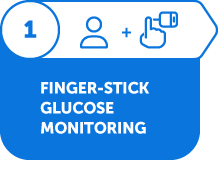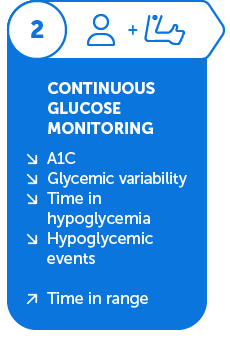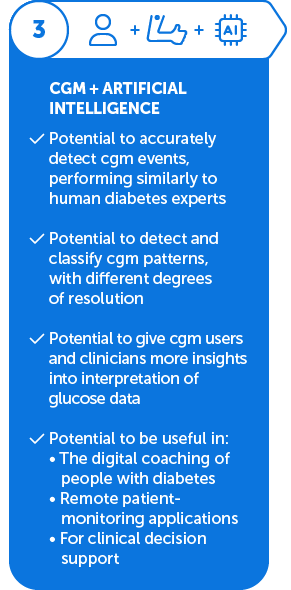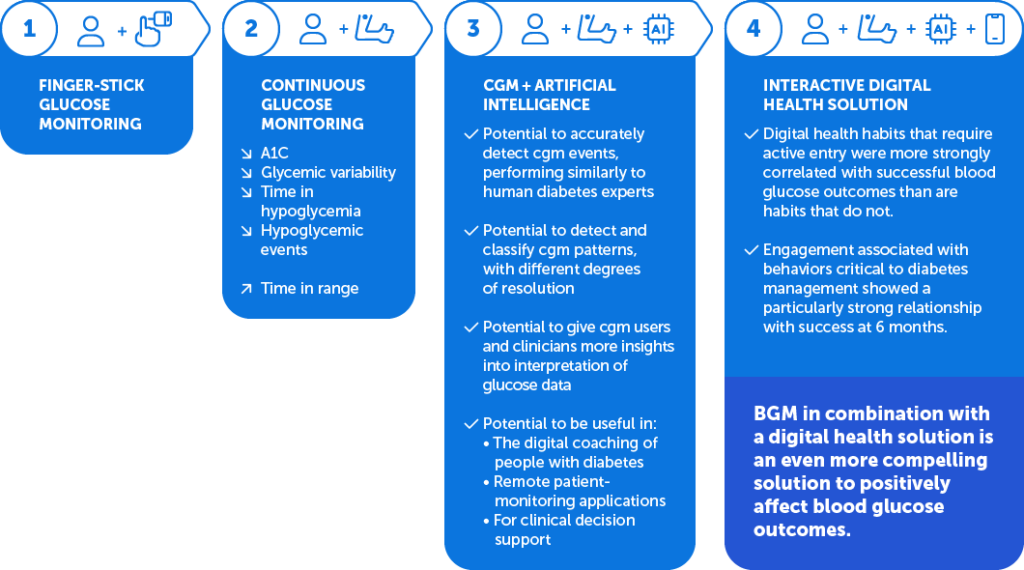Successful management of diabetes requires regular monitoring of the glucose levels of all patients,1 with greater frequency recommended for those who have type 1 or insulin-treated type 2 diabetes.2 In a 2017 study, rates of glucose monitoring ranged from 2.7 to 4.4 times per day in people with any type of diabetes, with many individuals3 typically focusing on premeal or bedtime glucose levels and thereby obtaining only a static snapshot of points in time. Studies show, however, that maintaining glucose control requires more than that type of intermittent and infrequent testing by finger-stick-based blood glucose monitoring.

During the past few decades, continuous glucose monitoring has emerged to provide a better understanding of glucose trends and patterns because it leads to the potential to help improve glucose management by collecting continuous glucose samples throughout the day and night. For the person with diabetes, CGM provides information about immediate glucose level as well as information about previous glucose trends, current direction, and rate of change.
Many research studies have confirmed the effectiveness of CGM. Randomized controlled trials4 have demonstrated:
- Decreased A1C
- Decreased glycemic variability
- Increased time in range
- Decreased time in hypoglycemia
- Reductions in hypoglycemic events
A study published in Diabetes Technology & Therapeutics analyzed the efficacy and safety of CGM initiation within 1 year of type 1 diabetes (T1D) diagnosis among all age-groups. The authors concluded that “irrespective of insulin delivery system, early initiation of CGM within one year from T1D diagnosis was associated with better glucose control and fewer diabetes-related emergency visits.”5

Automating the Detection of Significant Glucose Events
But while collecting CGM data points may now be within reach through glucose devices and digital health platforms, interpreting the hundreds of CGM data points generated per day can be challenging for both patients and healthcare providers when it comes to discriminating between patterns or events of concern and those that may be considered normal. In a related study conducted by Welldoc in collaboration with the University of Maryland Robert H. Smith School of Business Center for Health Information and Decision Systems, the authors evaluated the performance of a Welldoc automated method to detect significant glucose events and, further, classify events by level of severity. The results were then compared with those interpreted by a group of diabetes experts.
Study findings were presented by the authors at the 2021 Virtual INFORMS Healthcare Conference, the ADCES21 Virtual Conference, the ATTD 2021 Virtual Conference, the 2021 Association for Psychological Science Virtual Convention, and the American Diabetes Association 2021 Virtual Conference.
Welldoc developed an artificial-intelligence-driven methodology to automatically detect and classify discernible CGM patterns called CGM events. The method combined several different techniques in a time series analysis and a pattern matching. The model was further optimized by means of a set of training data. And its performance was evaluated by application of the model to separate test data from the same group of patients.6
Key Findings: Human vs. Machine: A Comparative Study
- Machine learning and signal detection techniques can be applied to accurately detect CGM events, performing similarly to human diabetes experts.
- The system can be trained to detect and classify CGM patterns, with different degrees of resolution as needed for different applications.
- The classification of detected events may give CGM users and clinicians more insights into interpretation of glucose data and may be useful in the digital coaching of people with diabetes, in remote patient-monitoring applications, and, additionally, for clinical decision support.

Habits Associated with Improvements in Blood Glucose Control
Management of type 2 diabetes (T2D) has been found to be challenging for people and requires careful attention to self-management behaviors, including tracking of glucose, medications, food consumed, activity, sleep patterns, and symptoms.6 Those challenges may get exacerbated by a lack of interaction beyond the doctor’s office visit, which may occur only quarterly at best. Research has found that clinically validated digital health tools offer promising solutions that can help patients achieve their diabetes management goals.7
But despite promising evidence of the effectiveness of digital health solutions, there is less available research that identifies the specific features and usage patterns critical to success based on the use of such solutions. A deeper understanding may be especially critical given questions surrounding the effectiveness of the self-monitoring of blood glucose.
A study conducted by Welldoc in collaboration with the University of Maryland Robert H. Smith School of Business Center for Health Information and Decision Systems8 analyzed the digital health habits associated with clinically meaningful improvements in blood glucose control. Findings suggest that digital health habits that require active entry—like the tracking of blood pressure, food consumed, and medication adherence—are more strongly correlated with successful blood glucose outcomes than are habits that do not. Moreover, engagement associated with behaviors critical to diabetes management—specifically, taking medication and monitoring carbohydrate intake—showed a particularly strong relationship with success at 6 months. Those findings make BGM in combination with a digital health solution an even more compelling solution to positively affect blood glucose outcomes.

References
- Kropff J, Choudhary P, Neupane S, et al. Accuracy and longevity of an implantable continuous glucose sensor in the PRECISE study: a 180-day, prospective, multicenter, pivotal trial. Diabetes Care. 2017;40:63-68.
- Mazze RS, Lucido D, Langer O, et al. Ambulatory glucose profile: representation of verified self-monitored blood glucose data. Diabetes Care. 1987;10:111-117.
- Danne T, Nimri R, Battelino T, et al. International consensus on use of continuous glucose monitoring. Diabetes Care. 2017;40:1631-1640.
- The ADCES and APhA/APhA Foundation Personal Continuous Glucose Monitoring Implementation Playbook, December 2020.
- Mulinacci G, Alonso GT, Snell-Bergeon JK, et al. Glycemic outcomes with early initiation of continuous glucose monitoring system in recently diagnosed patients with type 1 diabetes. Diabetes Technol Ther. 2019;21:6-10; https://pubmed.ncbi.nlm.nih.gov/30575413/.
- Casagrande et al., 2013.
- Cui et al., 2016.
- The protocol was reviewed by the University of Maryland Institutional Review Board.
